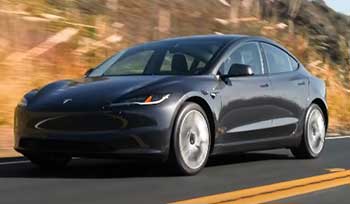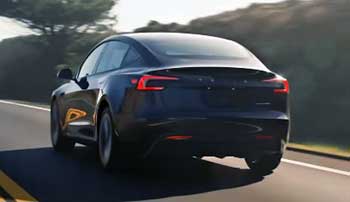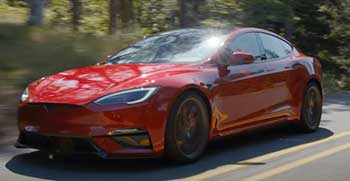
I’ve always been fascinated by Tesla’s electric vehicles, and choosing between the Model 3 and Model X felt like picking between two stellar siblings.
Both cars promise cutting-edge tech, thrilling performance, and eco-friendly driving, but they cater to different needs.
In this article, I’ll share my firsthand experience comparing these two, breaking down their pros, cons, maintenance tips, and key differences to help you decide which Tesla fits your lifestyle.
From performance to practicality, I’ll explore what makes each model shine and where they fall short.
Comparison Table
| Feature | Tesla Model 3 | Tesla Model X |
|---|---|---|
| Base Price | $42,490 (Long Range RWD) | $79,990 (Dual Motor AWD) |
| Range (EPA) | 298–363 miles | 313–351 miles |
| 0–60 mph | 2.9–4.9 seconds | 2.5–3.5 seconds |
| Horsepower | 271–510 hp | 670–1,020 hp |
| Seating Capacity | 5 | 5–7 |
| Cargo Space | 15 cu ft (trunk) | 92 cu ft (total) |
| Towing Capacity | None | 5,000 lbs |
| Drive Type | RWD or AWD | AWD |
| Interior Display | 15.4-inch touchscreen | 17-inch touchscreen |
| Unique Feature | Minimalist sedan design | Falcon Wing doors |
My Experience With Tesla Model 3
Driving the Tesla Model 3 feels like stepping into the future, but with a twist of practicality that makes it perfect for my daily life. The first time I slid into the driver’s seat, I was struck by its minimalist interior—no clutter, just a sleek 15.4-inch touchscreen controlling everything from navigation to climate.
It’s like a smartphone on wheels. The acceleration, especially in the Performance trim, is electrifying, hitting 0–60 mph in 2.9 seconds. I felt glued to the seat during a quick sprint on the highway, grinning like a kid. Its compact size makes it a breeze to navigate city streets, and parking in tight spots is no sweat.
The Model 3’s range—up to 363 miles in the Long Range RWD—means I can go days without charging, even with my daily commute. The ride is sporty, with sharp handling that makes winding roads fun, though it can feel a bit stiff over potholes.
I love the tech, like Autopilot, which handles highway driving with ease, but I’ve noticed the reliance on the touchscreen for everything can be distracting. Adjusting mirrors or wipers mid-drive? You’re tapping through menus, which isn’t ideal. Still, the Model 3’s affordability and efficiency make it a fantastic choice for someone like me who wants Tesla’s innovation without breaking the bank.
Pros Of Tesla Model 3
- Affordable Entry Point: Starting at $42,490, it’s Tesla’s most budget-friendly option, delivering premium features without the premium price tag.
- Impressive Range: The Long Range RWD offers up to 363 miles, perfect for long commutes or road trips without range anxiety.
- Nimble Handling: Its compact size and low center of gravity make it agile, especially in urban settings or on twisty roads.
- Quick Acceleration: The Performance trim’s 2.9-second 0–60 mph sprint rivals sports cars costing twice as much.
- Low Running Costs: With electricity cheaper than gas and minimal maintenance, it’s a wallet-friendly choice over time.
- Advanced Tech: Standard Autopilot and over-the-air updates keep the car feeling fresh and futuristic.
- Sleek Design: The aerodynamic sedan look is understated yet stylish, turning heads without screaming for attention.
The Model 3’s blend of affordability and performance is hard to beat. It’s ideal for solo drivers or small families who want Tesla’s tech without the bulk. The range and efficiency make it practical for daily use, while the sporty dynamics add a layer of fun.
I’ve found the minimalist interior refreshing, though it takes some getting used to. For budget-conscious buyers seeking an electric vehicle that doesn’t skimp on excitement, the Model 3 is a standout.
Read more: My Thoughts on Honda Odyssey Vs. Subaru Ascent
Cons Of Tesla Model 3
- Limited Cargo Space: The 15 cubic feet trunk is decent for a sedan but pales compared to SUVs like the Model X.
- Cramped Rear Seats: Taller passengers find the rear seats tight, with limited legroom and a low roofline.
- Touchscreen Overload: Controlling nearly everything via the central screen can be distracting and cumbersome while driving.
- Firm Ride: The suspension is sporty but stiff, making rough roads less comfortable than the Model X’s air suspension.
- No Towing Capability: Unlike the Model X, it can’t tow, limiting its utility for outdoor enthusiasts.
- No Apple CarPlay/Android Auto: The absence of these features frustrates users who prefer seamless smartphone integration.
- Build Quality Concerns: Some owners report minor fit-and-finish issues, though Tesla has improved in recent years.
The Model 3’s drawbacks are noticeable but don’t overshadow its strengths. The touchscreen reliance is my biggest gripe—I’ve fumbled adjusting settings on the go. The lack of towing and limited cargo space also make it less versatile for family adventures. Still, for city dwellers or those prioritizing efficiency and fun, these cons are manageable.
Maintenance Tips For Tesla Model 3

- Monitor Tire Pressure: Check tire pressure monthly to maintain efficiency and range; Tesla recommends 42–45 psi depending on the model.
- Keep Software Updated: Regularly accept over-the-air updates to improve performance, fix bugs, and add new features.
- Clean the Touchscreen: Use a microfiber cloth and non-abrasive cleaner to keep the 15.4-inch display smudge-free and responsive.
- Inspect Brake Pads: Regenerative braking reduces wear, but check pads every 12,000 miles or annually for safety.
- Maintain Cabin Air Filter: Replace the cabin air filter every two years to ensure optimal air quality and HVAC performance.
- Use Tesla-Approved Chargers: Stick to Tesla’s Supercharger network or certified home chargers to protect battery health.
- Wash Regularly: Clean the exterior weekly to prevent dirt buildup, especially on the glass roof, to maintain visibility and aesthetics.
Maintaining the Model 3 is straightforward since electric vehicles have fewer moving parts than gas cars. I’ve found that keeping the software updated is key—Tesla often rolls out enhancements that improve the driving experience. Regular cleaning and tire checks also go a long way in preserving efficiency and appearance. By sticking to these tips, I’ve kept my Model 3 running smoothly with minimal hassle.
My Experience With Tesla Model X
The Tesla Model X is a different beast altogether—a luxurious, spacious SUV that feels like a spaceship. The first time I opened those iconic Falcon Wing doors, I couldn’t help but smile; they’re a showstopper.
Inside, the 17-inch touchscreen is massive, and the panoramic windshield offers incredible visibility. The Plaid version’s 1,020 horsepower is mind-blowing, hitting 0–60 mph in 2.5 seconds. I took it on a family road trip, and the 92 cubic feet of cargo space easily swallowed luggage, camping gear, and more. The seven-seat option was a game-changer for my crew.
However, the Model X isn’t perfect. Its size makes it trickier to maneuver in tight spaces, and the price—starting at $79,990—stings. The air suspension smooths out bumps better than the Model 3, but I noticed a faint motor whine under heavy acceleration.
The tech is top-notch, with Autopilot and a premium audio system, but the Falcon Wing doors can be slow to open in tight spots. For families or those craving luxury and space, the Model X delivers an unmatched experience, but it comes at a cost.
Pros Of Tesla Model X
- Spacious Interior: With up to 92 cubic feet of cargo space and seating for seven, it’s ideal for families or road trips.
- Insane Performance: The Plaid’s 1,020 hp and 2.5-second 0–60 mph time make it one of the fastest SUVs on the planet.
- Falcon Wing Doors: These unique doors add flair and make loading kids or gear easier in tight spaces.
- Towing Capability: A 5,000-pound towing capacity opens up options for trailers, boats, or campers.
- Luxurious Features: Ventilated seats, a 22-speaker audio system, and a panoramic windshield elevate comfort.
- Advanced Safety: Tesla Vision, 360-degree monitoring, and emergency braking ensure top-tier safety ratings.
- Smooth Ride: Adaptive air suspension absorbs bumps, making long drives more comfortable than the Model 3.
The Model X is a luxury powerhouse. Its performance is unreal for an SUV, and the interior feels like a first-class cabin. I love the space and versatility, especially for family outings. The Falcon Wing doors are a conversation starter, though they’re more practical than they seem. If you need room and power, the Model X is a dream.
Cons Of Tesla Model X

- High Price Tag: Starting at $79,990, it’s nearly double the Model 3’s cost, making it a significant investment.
- Bulky Size: Its large footprint makes parking and navigating tight spaces more challenging than the Model 3.
- Complex Doors: Falcon Wing doors are cool but slow to open and can struggle in low-clearance areas.
- Motor Noise: Some owners, including me, notice a high-pitched whine under heavy acceleration.
- Lower Efficiency: At 107–122 MPGe, it’s less efficient than the Model 3’s 112–137 MPGe.
- Maintenance Costs: Repairs, especially for Falcon Wing doors, can be pricier than the Model 3.
- No Apple CarPlay/Android Auto: Like the Model 3, it lacks these features, which feels like a miss for a luxury SUV.
The Model X’s cons are tied to its premium nature. The price and size are hurdles for some, and the doors, while awesome, aren’t always practical. Efficiency takes a hit compared to the Model 3, but the trade-off is worth it for the space and power. It’s a luxury vehicle with luxury quirks.
Maintenance Tips For Tesla Model X
- Check Air Suspension: Inspect the air suspension system annually to ensure it adjusts properly for ride height and comfort.
- Update Software Regularly: Accept over-the-air updates to optimize performance and address Falcon Wing door functionality.
- Clean Falcon Wing Doors: Wipe down door sensors and hinges monthly to prevent dirt from affecting their operation.
- Monitor Battery Health: Use Tesla’s app to track battery status and avoid deep discharges to extend battery life.
- Replace Cabin Filters: Swap out cabin air filters every two years to maintain air quality in the spacious interior.
- Use Superchargers Wisely: Rely on Tesla’s Supercharger network for fast charging, but avoid frequent full charges to preserve battery.
- Inspect Tires Frequently: Check tire pressure and tread monthly, as the Model X’s weight demands robust tires (42–45 psi).
The Model X requires slightly more attention than the Model 3 due to its complex features like the Falcon Wing doors and air suspension. I’ve found that keeping the doors clean and software updated prevents most issues. Regular tire checks are crucial given the vehicle’s weight. These steps keep the Model X feeling like a luxury fortress.
Also read: My Thoughts on Ford Edge Vs. Hyundai Tucson
Frequently Asked Questions (FAQ)
Tesla isn’t discontinuing the Model 3. It remains their best-selling EV, with recent updates like the “Highland” refresh improving its appeal.
The Model 3 Long Range RWD offers the best value, balancing a 363-mile range, strong performance, and a starting price of $42,490.
The Model X’s higher price reflects its larger size, advanced features like Falcon Wing doors, air suspension, and greater towing capacity.
The Model X is significantly larger, at 199.1 inches long with 92 cu ft of cargo space, versus the Model 3’s 184.8 inches and 15 cu ft.
Conclusion: For Tesla Model 3 And Model X
Choosing between the Tesla Model 3 and Model X depends on your needs. If you’re after an affordable, nimble EV with great range and sporty handling, the Model 3 is your pick. It’s perfect for city driving and solo commuters.
If you need space, luxury, and power, the Model X delivers with its roomy interior and jaw-dropping performance. Both cars offer Tesla’s cutting-edge tech, but your lifestyle—whether it’s urban efficiency or family adventures—will steer you toward the right choice. Test drive them; you’ll feel the difference instantly.

